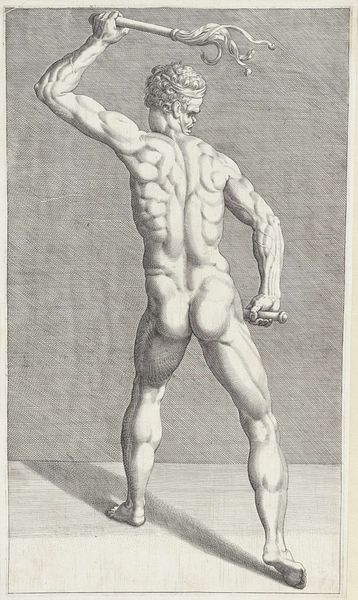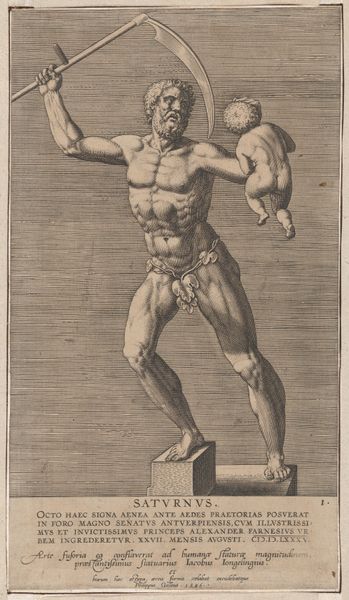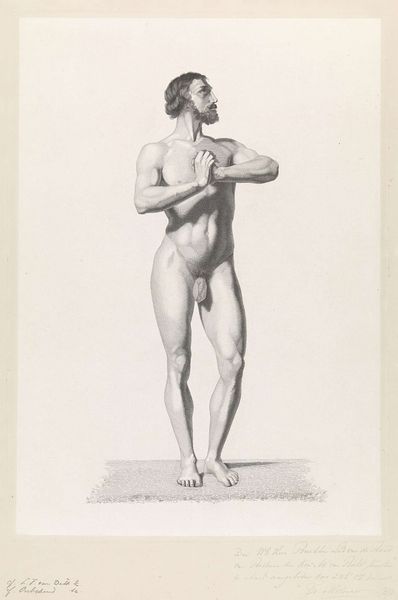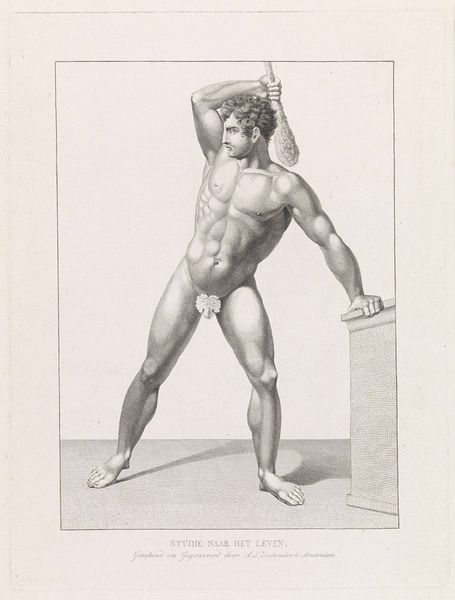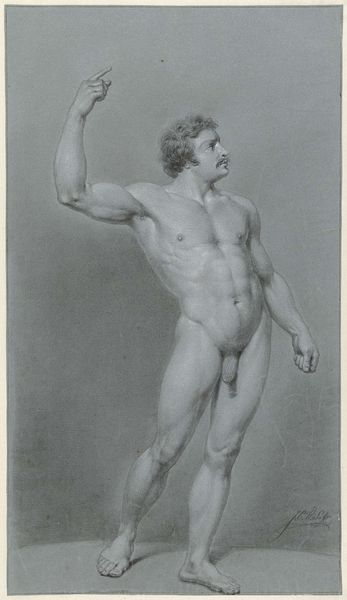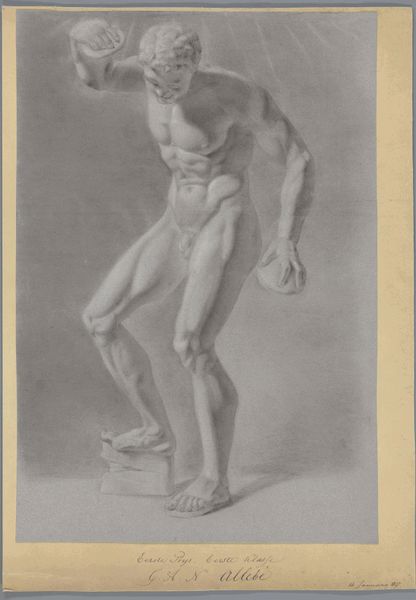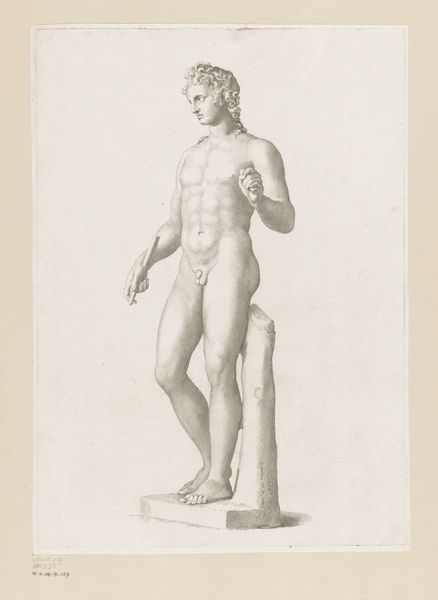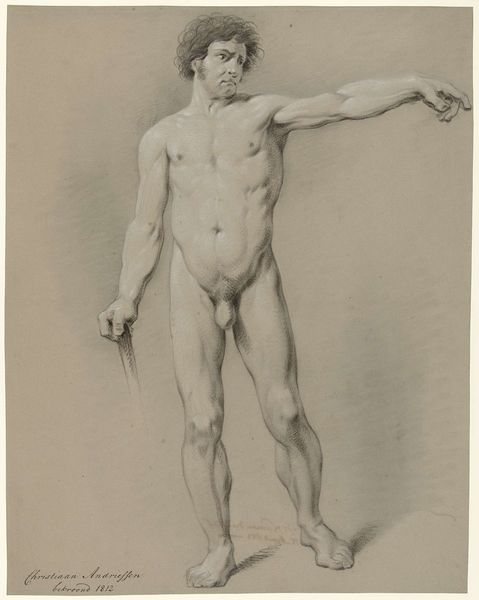
Naakte man, met de rechterhand op een stenen blok leunend 1836
0:00
0:00
#
low key portrait
#
portrait image
#
portrait subject
#
charcoal drawing
#
charcoal art
#
portrait reference
#
portrait drawing
#
portrait art
#
fine art portrait
#
celebrity portrait
Dimensions: height 437 mm, width 302 mm
Copyright: Rijks Museum: Open Domain
Henricus Wilhelmus Couwenberg created this print of a nude man leaning on stone blocks in the early 19th century. During this period, the male nude was frequently depicted in academic studies, embodying ideals of beauty and strength rooted in classical antiquity. Consider the traditional canon of male beauty in the historical context of 19th century European art and society. The model's confident pose and muscular physique are a clear effort to embody virility and power. This representation promotes a specific idea of masculinity, one which equates physical form with social status. What does it mean to portray the male body as a symbol of authority and control? How do you think this affects the way we perceive masculinity today? Couwenberg’s piece invites us to reflect on how societal values can influence artistic expression.
Comments
No comments
Be the first to comment and join the conversation on the ultimate creative platform.
